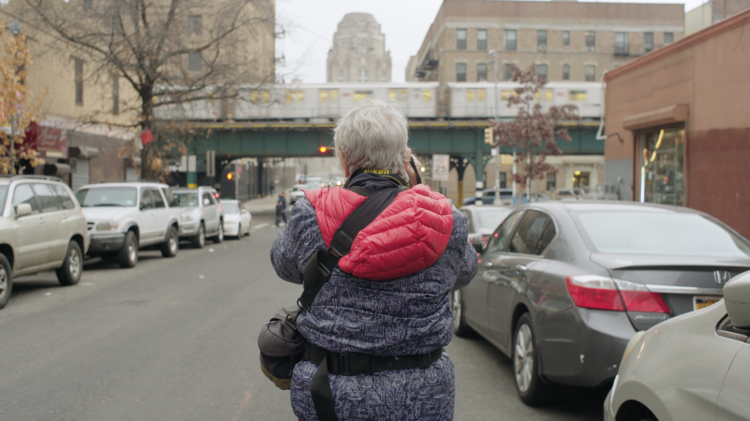One of the great joys about films is the way that they end up surprising you. Take the joyous Japanese food-western film Tampopo for example. On its surface, it’s just a story about how to make the best ramen, but director Juzo Itami manages to make you understand exactly why great ramen is good for your soul. He manages to do this by savouring the creation of the dish, guiding the audience through each step, explaining the importance of each ingredient, and how it is prepared. Then, in a joyous climax, he presents the dish in all its glory, and as the audiences beams with joy from the triumph of shopkeeper Tampopo, our mind immediately conjures the smell and taste of the dish itself.
Such is the power of cinema that it can immerse you completely in the world of the story you’re watching by the mere guidance of direction, editing, subject, and music, all of which create an electric energy that makes the intangible, tangible. When I watched Tampopo for the first time, I left the cinema feeling full and content, like I was properly nourished.
I had a similar feeling when I watched Selina Miles essential documentary Martha: A Picture Story. No, not nourished like I’d eaten a big meal, but instead, the feeling of vibrancy and energy that you comes at the end of a heart pounding concert by your favourite band. I had never given much thought to what the vibe or energy of painting with graffiti would be like, or even to what the cultural importance of the art form was. I had just assumed it was like every piece of art I’d ever seen – it existed as just another variety of art, albeit a greatly vilified one.
Miles takes the life story of Martha Cooper and through propulsive, energetic editing we’re given the feeling of electricity that comes with the art of graffitiing. Not just the adrenaline from the illegal aspect of it, but also the energy that being expressive in such a vibrant manner brings. It’s this kind of filmmaking that works to reflect the energy the subject. It can be hard to convey how much something means to someone, but Selina Miles manages to use all of the tools of cinema to immerse you in the world of Martha Cooper, making you feel what she sees in the world of graffiti.
Martha Cooper is a photographer, and the co-author of the influential book, Subway Art. Alongside fellow New York photographer Henry Chalfant, Martha documents the graffiti work of the seventies and eighties. Miles goes to great lengths to show how both Martha and Henry integrated themselves in the community of graffiti artists, earning their trust and friendship by showing that they weren’t there to rat on them, but instead to archive their historical importance to the city of New York. Their photography took place right at the height of the ‘War on Graffiti’, a campaign run by mayor John Lindsay, a leader who sought to condemn this unauthorised art, all the while neglecting the other aspects of what was dragging New York further into bankruptcy.
Subway Art was cause for celebration amongst the graffiti community around the world, working as a bible for many who engaged with the art. The glossary, photo essays, and discussions about the art helped make the process of graffitiing its own universal language. In an amusing moment, Martha comments on the fact that the book was so poorly received when it first landed that it cost them money to produce. In turn, the scarcity created by this weak reception meant that those who found the book and cherished it deeply ended up photocopying it to give to their friends. In a moment that shows how tender and supportive the graffiti community is, we see two artists shading the black and white photocopied book as a way of learning the colour gradients of the artists they’re learning from.
Before we reach the Subway Art part of Martha’s life, we get to see her upbringing and attempts to break into a male dominated industry. Martha talks about the frustrations of being pushed to photograph women training for the Olympics, and being told to focus on taking photos of their cleavage rather than anything else. This was, and in many ways, still is, an industry focused on sex, rather than the subjects.

Which is not to say that Martha wasn’t interested in bodies. Rather, she was interested in documenting how people expressed themselves. During her time in Japan, she documented the varying tattoos and tattoo artists at work. These photographs were intended for National Geographic, but when they declined the chance to publish them, Martha put them out in the book Tokyo Tattoo. Amusingly, Martha did work with the magazine later on, documenting manual pollinators in Japan who hand pollinated flowers due to a lack of bee activity, but the subject matter didn’t engage her enough to continue on.
This is an aspect that I grew to admire and love Martha Cooper for as the documentary rolled on. Her level of interest in a subject was paramount for how she would approach the material. If she wasn’t interested, then she wouldn’t do it. In many ways, Martha realised the importance of her work early on, knowing that there was great value in documenting the untouched side of history. Nobody was going to the Bronx in the seventies and cataloguing the lives that were happening there, and certainly nobody else was going there and recognising the level of talent that came with the creativity that poverty helped foster.
Graffiti in the seventies was about making yourself known. It was traditionally the artists name and street number, and in many ways, it was an outlet for them. A way to run away from problems at home, and to be themselves. Graffiti was a symptom of the problem, but not a problem itself. Scratch that, to call it a symptom feels too derogatory. It was a solution to the problem.
In this way, Martha knew how to get right to the heart of the culture of a city, to recognise the value in something that a city was working to obliterate. The New York of today is sanitised, with subway trains devoid of graffiti, their windows free from art, and yet, the commissioned artworks by big name artists like Shephard Fairey, Ben Eine and more, that cover the walls of buildings and alleyways wouldn’t exist without the wealth of graffiti artists who came before them.
When 5 Pointz was demolished in 2014, the modern equivalence of the removal of history took place. Building owner Jerry Wolkoff was eventually ordered to pay $6.7 million in damages to 21 artists whose work was on the 5 Pointz building. Public art is a transient medium. It’s a world of temporary masterpieces, put up one day, whitewashed or demolished the next. This temporary nature of art doesn’t make the art any less important, and certainly doesn’t remove the cultural value of places like 5 Pointz or the train system of New York, which is why the way Martha collects these art projects work to honour their fleeting existence. Her photography cements the artists in history.
Martha always worked in service of the subject, as is mentioned in the film, ‘the presence of the photographer is minimal, it’s all about subject matter’. She gathers the history of the fringe dwellers, the people who would otherwise may be forgotten by time. As Martha grows older, so does the world around her, and the areas that once housed lower income families are now under threat of gentrification. Here, Martha documents the changes of cities, of towns, of the way people live.
Yet, to document boarded up buildings or ruined streets is a cheap and easy act. The art of taking photos of people trying to exist, people living and celebrating life however they can, is where the respect and admiration for humanity comes to fruition. Yet, when Martha works with a gallery in New York to celebrate her art, she is told that there should be little to no photos of smiling faces, with the memorable line, ‘people just don’t like a smiling face, they just don’t’. Which is fascinating when you cast your mind back through history and realise the dearth of people smiling through history (besides, you know, the Mona Lisa that is). What does it say about the world that people respond to images of poverty more than images of happiness?

This isn’t the documentary to reflect on that, which isn’t a complaint, it’s more of a compliment. There is so much operating within Martha: A Picture Story that I honestly can’t wait to dive into this again and explore the tendrils of history that are touched on. For a ninety minute documentary, there is a lot going on in every frame. The energy and excitement that Martha has for her career is infectious, so much so that when she joins a group of graffiti artists breaking into a compound in Germany, her grin is so wide that you can’t help but break into a grin yourself.
There is a clear affection for the people of the world who she shares the community with, and they clearly admire her a lot too. At book signings and concerts, the mere mention of Martha Cooper brings the house down. The adoration is glorious, and makes Martha’s mild concern that she’d never be the subject of a Google doodle quite cute. It doesn’t matter that Google may not recognise her, because the respect of a corporation like that means little in comparison to the glory that the art community brings.
Honestly, I feel quite spoilt for choice when it comes to documentaries about art this year. One of my favourite films of the year, It All Started With a Stale Sandwich, covers the value of public art in Australia, celebrating the importance of the curator. Then there’s Looby, the little seen film about Aussie artist Keith Looby, an eccentric yet gloriously talented artist who rankles more than a few feathers. And finally, Selina Miles Martha: A Picture Story celebrates the work of the artist who documents history. It’s a circular piece, with Miles documenting the documenter, making this a love letter to both Martha, and the art that Martha has documented.
I adore this film. I have fallen head over heels for Martha Cooper, whose presence is so enjoyable and infectious that I can’t help but feel better off for having spent ninety minutes in her world. And gosh am I grateful for the presence of a director like Selina Miles on the scene. Given the wealth of talking head documentaries that feel staid and routine, it’s exciting to see someone employ a reflective lens to their subjects, bringing out their energy in the way their story is told. The way Selina intimately understands her subject, and knows exactly how to present that story, makes me beyond excited to see what her body of work will look like over the next few years.
To bring back that comparison to Tampopo, this is a film that’ll make you feel full of joy. It’ll make you feel alive again, like you can go out and celebrate all that is good about the world. I’m still beaming from having watched this a week ago, and I cannot wait to revisit it.
I cannot recommend this film highly enough. Easily one of the best films of the year, and one of the finest documentaries as well.
Director: Selina Miles
Subject: Martha Cooper




